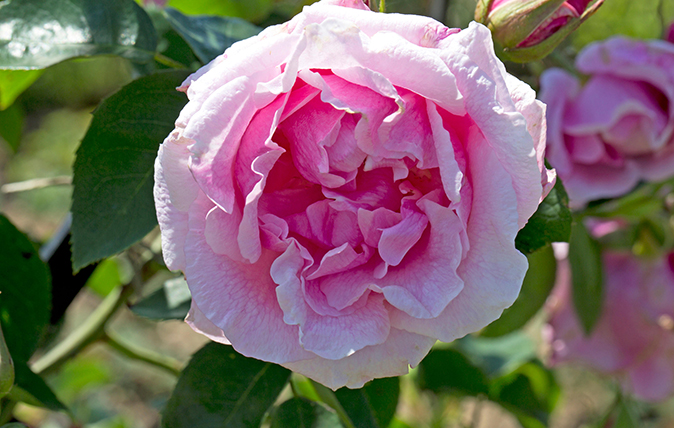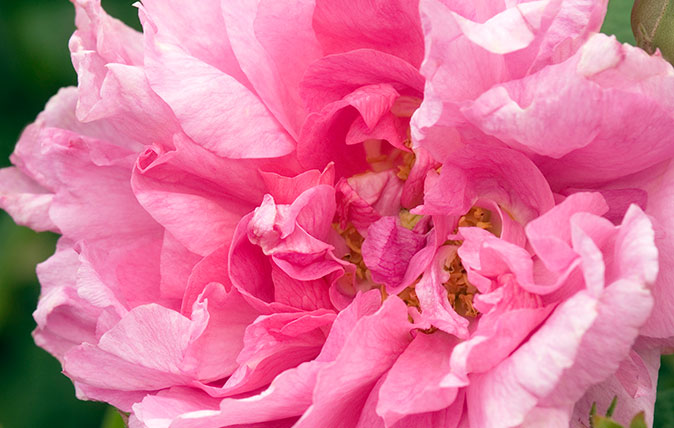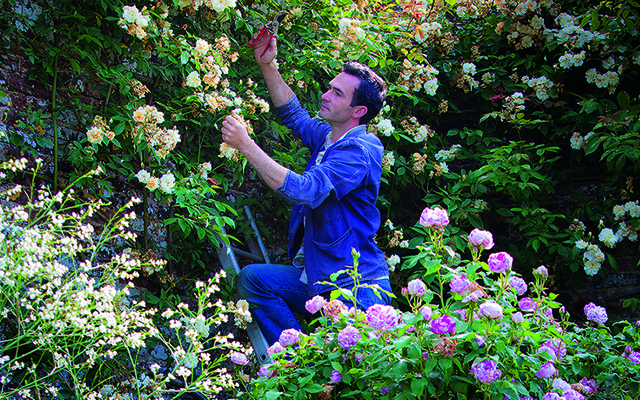The true rose of St Valentine isn't actually red
In 1971 a Catalan rose-breeder called Pere Dot introduced a little pink Polyantha rose called San Valentin. Charles Quest-Ritson explores.


What will you do for St Valentine’s Day? Will you ‘say it with roses’? Well, I certainly did last year, but in quite an extraordinary way and I ended up knowing much more about St Valentine himself. His legends turn around his being an early Christian martyr. One has that he was the bishop of Terni at the time of the Emperor Diocletian’s persecution and paid with his life for his fidelity to his faith.
Terni is a provincial capital in Umbria, some 60 miles north of Rome, and its latter-day inhabitants haven’t forgotten him. St Valentine is the patron of the city and his remains are an object of veneration in Terni’s basilica. For a week around his feast day on February 14, Terni bustles with all the panoply of a small-town Italian festa: music, processions, shows and delicious street-food stalls.
Mention St Valentine to your average British male, and red roses are one of the first things that come into his mind. Long-stemmed, elegant and scentless, they’re flown in their millions from farms in Kenya and Colombia to satisfy a commercial demand that’s been fairly cynically developed over the past 20 years. They’re far too expensive, too, which proves not only that men in love are fools, but also that a fool and his money are soon parted.
What I didn’t know is that there’s a rose called San Valentin. Well, actually, I did know, but had forgotten about it. It’s not red and it’s not at all pushy. In fact, it’s a little pink Polyantha rose, introduced in 1971 by a Catalan rose-breeder called Pere Dot. I had seen it only once, 10 years ago, in the Botanical Garden in Madrid, but Terni thought it would make an excellent theme for last year’s February celebrations.
Dot bred three very popular and important roses nearly 100 years ago: the white shrub rose Nevada, the popular climber Mme Grégoire Staechelin and Golden Moss, the first yellow moss rose ever bred. I was asked to give the keynote lecture on his life as a rose breeder, not so much because I knew anything about him, but more because any Englishman who is happy to lecture in Italian is always in demand at horticultural events in Italy.
I had to do a lot of research, but the lecture came together fairly well and the audience, hosted by the present Bishop of Terni, clapped in the right places.
Like most 50-year-old rose varieties, San Valentin is nearly extinct – or was, until the good and the great of Terni got involved. They discovered that a plant was still growing in the magnificent collection put together in Tuscany by the Pope’s doctor, Prof Gianfranco Fineschi. His Roseto at Cavriglia has the largest collection of modern roses in the world – some 6,500 cultivars.
Sign up for the Country Life Newsletter
Exquisite houses, the beauty of Nature, and how to get the most from your life, straight to your inbox.
A local entrepreneur called Nicoletta Campanella, who has embarked on a 12-part series of books about roses, arranged for San Valentin to be propagated and for plants of it, in pots, to be brought to the conference for a relaunch. It would be given the new name of San Valentino di Terni and would my wife and I like to act as godparents at the baptism?
I should explain that, 15 years ago, Brigid and I wrote an encyclopaedia of roses that has sold well in Italy and our hosts thought that nothing could be more romantic than a husband and wife travelling the world together to study roses. Off we went and I duly discoursed on the Italian character (romantico) and the English (more riservato) and the story of St Valentine, who is said to have intervened in a quarrel between lovers by giving them a rose (that was romanticissimo).
Then, we were fêted as guests of honour at a smashing dinner and, yes, a little plant of San Valentin is now growing in our Hampshire garden.
Is it a good rose? Yes, quite. It flowers continuously and it seems very healthy. It reminds me slightly of a smaller version of Ballerina, simultaneously perky and dainty. I shall enjoy growing it and will start taking cuttings from it next autumn.
And was it fun, the outing as a whole? Most certainly. The charm of the Italians and their sense of style in everything connected to the San Valentino celebrations guaranteed our enjoyment.
As did the enormous bunch of scentless red roses from Kenya that greeted us in our hotel, because one thing we did learn when writing our encyclopaedia is that there is no such thing as a bad rose.
Charles Quest-Ritson wrote the RHS Encyclopedia of Roses

How to use rose petals
Blended into ice cream and served with chocolate tart or set into jelly: just two of our favourite rose petal

Credit: Rita Coates
The mysterious case of the Frankfurt rose

Tips on deadheading roses
Troy Scott Smith extols the joys of deadheading roses.
Country Life is unlike any other magazine: the only glossy weekly on the newsstand and the only magazine that has been guest-edited by HRH The King not once, but twice. It is a celebration of modern rural life and all its diverse joys and pleasures — that was first published in Queen Victoria's Diamond Jubilee year. Our eclectic mixture of witty and informative content — from the most up-to-date property news and commentary and a coveted glimpse inside some of the UK's best houses and gardens, to gardening, the arts and interior design, written by experts in their field — still cannot be found in print or online, anywhere else.
-
 Two quick and easy seasonal asparagus recipes to try this Easter Weekend
Two quick and easy seasonal asparagus recipes to try this Easter WeekendAsparagus has royal roots — it was once a favourite of Madame de Pompadour.
By Melanie Johnson
-
 Sip tea and laugh at your neighbours in this seaside Norfolk home with a watchtower
Sip tea and laugh at your neighbours in this seaside Norfolk home with a watchtowerOn Cliff Hill in Gorleston, one home is taller than all the others. It could be yours.
By James Fisher